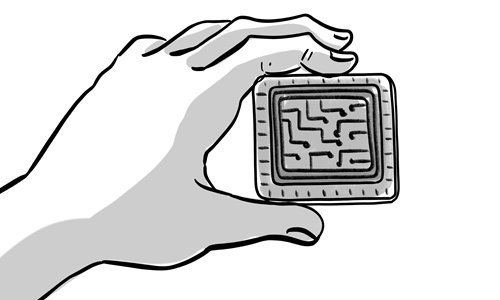HOME >> BUSINESS
Japan’s chip development history relevant for China
By Feng Zhaokui Source:Global Times Published: 2019/7/10 18:31:31

Illustration: Luo Xuan/GT
During its rise as a global electronics producer in the 20th century, Japan saw its chip and semiconductor sectors go through good and bad times with the US. A close analysis of this history still has some relevance for us today.
The US used to be very active in transferring advanced technology to Japan in the 1950s. In this context, Japanese companies like Hitachi and Toshiba obtained transistor technology from the US. Then the mass production of semiconductor radios and other electronic products led to the mass manufacturing of transistors in Japan. In 1960, the country's annual output of transistors exceeded 100 million, surpassing the US for the second consecutive year.
While Japanese companies used transistors to produce consumer goods, US semiconductor companies mainly supplied transistors for military products. However, as the military demand for transistors was far behind civilian demand, civilian electronics offered a much bigger boost for the transistor industry. This is the most important reason why Japan's transistor production exceeded that of the US in such a short time period.
When the US invented integrated circuit (IC) chips for military needs at the end of the 1950s, Japanese semiconductor companies turned to develop end products that could be used by the mass public.
In 1972, Casio launched the world's leading chip-based personal calculator, which immediately attracted other Japanese electronics companies to enter the new product field. Strong demand for IC chips effectively pushed forward the development of the Japanese chip industry.
During the period between 1976 and 1980, the five largest semiconductor producing companies in Japan - Fujitsu, NEC, Hitachi, Mitsubishi Electric and Toshiba - formed the VLSI Technology Research Association, which developed 256K dynamic random-access memory (DRAM) in 1980, two years earlier than the US.
In 1987, Japan had a nearly 80 percent share of the global DRAM market and had seven of the world's top 10 chip makers.
During the early days of the VLSI Technology Research Association, Japan's chip industry mainly relied on production equipment imported from the US and Western Europe. But as time went by, there was gradually a shift toward domestic equipment and materials, and the Japanese chip industry quickly evolved into an independent industrial sector relying on domestically produced equipment and materials.
Japan's successful catch-up in the semiconductor field brought great competitive pressure to the US semiconductor industry. Against this backdrop, the US started to play unfairly. In 1985, the US initiated a Section 301 case over alleged dumping of Japanese electronic products; meanwhile, the Plaza Accord resulted in a significant appreciation of the yen. It was under pressure from the US as the two countries signed the US-Japanese Semiconductor Agreement in 1986, placing restrictions on Japanese DRAM producers.
After that, the US regained its market share in the global semiconductor market with its central processing unit (CPU) technology. In the meantime, with strong support from the US, South Korea and other Asian countries and regions also developed their DRAM industries by introducing more technology and talent, further squeezing the market space for the Japanese semiconductor sector.
This history shows that the US cannot tolerate being surpassed by other countries in technological development, whether they are allies or not. However, in the face of the US crackdown, even though the Japanese government was willing to bend the knee, Japanese companies didn't surrender in terms of technological development.
Today, Japanese semiconductor companies are committed to developing chips that are expected to be vital for new products, such as autonomous cars, robots and the Internet of Things, so as to regain the leading position in the world market.
From the perspective of the semiconductor industrial chain, Japanese companies have more than 50 percent of the market for the 14 important semiconductor materials, and the country has become the largest exporter of semiconductor materials in the world. In 2018, of the top 15 semiconductor manufacturing equipment producers in the world, seven were from Japan, with four from the US and three from Europe.
For the semiconductor industry, materials are the foundation, and equipment is the key. Thus, with double advantages in materials and equipment, the Japanese semiconductor industry still has high hopes. It can be said that Japanese semiconductor manufacturers have found a new development path.
The author is an honorary member of the Chinese Academy of Social Sciences. bizopinion@globaltimes.com.cn
Posted in: INSIDER'S EYE